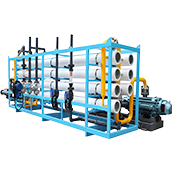The shallow sand filter has gained recognition as a reliable water treatment solution, particularly for its efficiency in various applications. This technology, characterized by its simple design and effective filtration capabilities, is often compared to other water treatment systems such as multimedia filters, activated carbon filters, and membrane filters. In this article, we will explore the advantages and disadvantages of these technologies, assess their effectiveness in removing specific pollutants, and evaluate their costs, maintenance requirements, and operational differences.
Comparative Overview of Water Treatment Technologies
1. Shallow Sand Filter
The shallow sand filter is designed to treat water by utilizing a bed of sand to remove suspended solids, bacteria, and other contaminants. Its primary advantages include:
- Cost-Effectiveness: Shallow sand filters typically have lower capital and operational costs compared to other advanced filtration technologies. They require less energy for operation and are relatively inexpensive to install and maintain.

- Simplicity of Operation: The design of the shallow sand filter allows for easy operation and minimal operator training. Automatic backwash systems can further enhance efficiency by cleaning the filter media without extensive manual intervention.
- Adaptability: These filters are effective in treating varying water sources, including surface and groundwater, making them suitable for diverse applications, from small-scale systems to larger municipal treatment plants.
However, they may not effectively remove certain dissolved contaminants, requiring additional treatment methods in specific scenarios.
2. Multimedia Filters
Multimedia filters use multiple layers of filtration media, such as sand, anthracite, and garnet, to improve the removal of larger particles and suspended solids. Their advantages include:
- Higher Filtration Efficiency: The layered structure allows multimedia filters to capture a broader range of particle sizes, increasing overall efficiency.

- Longer Filter Run Times: Due to their design, multimedia filters can often operate for extended periods before requiring backwashing, leading to reduced downtime.
Nevertheless, they typically involve higher initial setup costs and may require more complex maintenance procedures.
3. Activated Carbon Filters
Activated carbon filters are renowned for their ability to remove organic compounds, chlorine, and odor from water. Key advantages include:
- Chemical Removal: They are particularly effective at removing specific contaminants, such as volatile organic compounds (VOCs) and chlorine, providing high-quality treated water.
- Taste and Odor Improvement: Activated carbon filters significantly improve the taste and odor of water, making them ideal for residential applications.

However, they have a limited capacity for particulate removal and must be replaced or regenerated periodically, leading to higher ongoing costs.
4. Membrane Filters
Membrane filtration technologies, including reverse osmosis and ultrafiltration, employ semi-permeable membranes to separate contaminants from water. Their benefits include:
- Extensive Contaminant Removal: Membrane filters are highly effective in removing a wide range of contaminants, including dissolved solids, bacteria, and viruses.
- High Water Quality: They produce very high-quality permeate, making them suitable for sensitive applications like pharmaceutical and food industries.
On the downside, membrane systems can be expensive to install and operate, often requiring pre-treatment processes to avoid fouling, which adds to their complexity and maintenance needs.
Cost and Maintenance Considerations
When evaluating the overall cost and maintenance aspects of these water treatment technologies, the shallow sand filter stands out due to its economic advantages. Here are some key points:
- Initial Investment: Shallow sand filters generally have a lower initial investment compared to multimedia and membrane filters, making them accessible for smaller operations and communities.

- Operational Costs: With minimal energy requirements and straightforward maintenance needs, shallow sand filters provide cost savings over time. Automatic backwash features further reduce the labor associated with manual cleaning.
- Maintenance: The maintenance of shallow sand filters is relatively simple, requiring periodic backwashing to remove trapped solids. In contrast, activated carbon and membrane filters require more frequent replacement or regeneration of media, resulting in higher ongoing costs.
Effectiveness in Pollutant Removal
The effectiveness of each technology in removing specific pollutants varies:
- Shallow sand filters are highly effective for turbidity removal and pathogens, making them suitable for preliminary treatment processes. However, they may require supplementary systems for dissolved contaminants.
- Multimedia filters excel in a broader range of particle sizes, while activated carbon filters specialize in removing organic chemicals and improving taste and odor.
- Membrane filters are unparalleled in their ability to remove dissolved solids and microorganisms but come at a higher operational cost.

Conclusion
In conclusion, the shallow sand filter presents a compelling option within the water treatment landscape. While it may not match the specificity of activated carbon or the thoroughness of membrane systems in all applications, its cost-effectiveness, ease of use, and adaptability make it an excellent choice for various scenarios. Understanding the strengths and limitations of each filtration technology will empower users to make informed decisions tailored to their specific water treatment needs.
FAQ:
Q:Is it necessary to pre-treat water before using a shallow sand filter?
A:Pre-treatment is often recommended to remove larger particles or debris, which can prolong the lifespan of the sand filter and enhance its efficiency.
Q:What are common problems associated with shallow sand filters?
A:Common issues include clogging, reduced flow rates, and media degradation. Regular maintenance can help prevent these problems.
Related Product Links
Multimedia filter
backwash filter


















